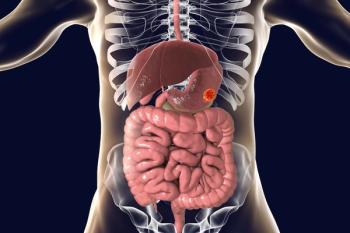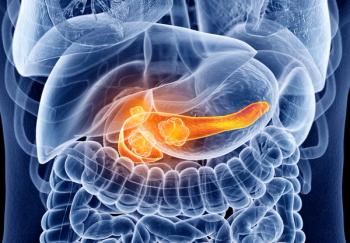
Oncology NEWS International
- Oncology NEWS International Vol 8 No 8
- Volume 8
- Issue 8
Celiac Plexus Neurolysis Relieves Pancreatic Cancer Pain
ORLANDO-The delivery of neurolytic chemicals to the celiac plexus, guided by endoscopic ultrasound, has been shown to be an effective, convenient, and safe technique to provide pain relief for pancreatic cancer patients.
ORLANDOThe delivery of neurolytic chemicals to the celiac plexus, guided by endoscopic ultrasound, has been shown to be an effective, convenient, and safe technique to provide pain relief for pancreatic cancer patients.
At the Digestive Disease Week meeting, gastroenterologist Marc Catalano, MD, described the findings from a study done at the Pancreatic Biliary Center, St. Lukes Medical Center, Milwaukee. The research involved 16 patients with unresectable pancreatic cancer and intractable pain.
In the past, this kind of pain has been managed with narcotics, Dr. Catalano said, or the celiac plexus nerve has been destroyed percutaneously, with the drugs injected under the guidance of CT scan. However, this region is difficult to locate under CT guidance, he said, in part because of all the tissue that the needle must traverse. Also, the CT scan, being an external modality, offers only fuzzy images, he added.
Complications of percutaneous delivery of the neurolytic drugs with CT guidance have included bleeding and paralysis, through accidental destruction of nearby spinal nerves.
Its easy to precisely identify the target structures with endoscopic ultrasound, which brings the transducer right into the area, Dr. Catalano said. Alcohol is then injected to deaden the nerves causing the pain. He noted that this method was pioneered by Dr. Maurits Wiersema of the Mayo Clinic and by Dr. Frank Gress of Winthrop University Hospital, Mineola, New York.
In this study, patients were asked to rank their pain on a scale of 10 both before and after the procedure. The researchers obtained post-procedure pain scores at 2, 4, 8, and 12 weeks. While the mean pain score was 7.8 before the block, by 12 weeks it had dropped to 1.5. Eleven of 13 patients (85%) followed at 12 weeks had also reduced their pain medication. Three patients experienced mild diarrhea, which was treated successfully with medication.
Physicians can stage pancreatic cancer patients and treat their pain simultaneously using an endoscopic ultrasound probe, Dr. Catalano said. For the experienced endosonographer who does fine-needle aspiration, there is little or no learning curve involved with this method, he added.
Articles in this issue
over 16 years ago
False positives frequent in CT lung cancer screening trialover 26 years ago
Stereotactic Core Biopsy Establishes Many Prognostic Factorsover 26 years ago
Breast Cancer Prevention With Tamoxifen Appears Cost-Effectiveover 26 years ago
NCI Discovers Gene Variations From Existing Databasesover 26 years ago
CPDR Unveils First Center Solely for Prostate Cancer Researchover 26 years ago
Going Beyond CHOP in Advanced Large-Cell Lymphomaover 26 years ago
Memorial Sloan-Kettering Opens Rockefeller Outpatient Pavilionover 26 years ago
Ernst Wynder, Pioneer in Preventive Medicineover 26 years ago
AHCPR Plans Health Care Market, Managed Care Research Centersover 26 years ago
NSAIDs May Protect Against Common GI CancersNewsletter
Stay up to date on recent advances in the multidisciplinary approach to cancer.

















































































